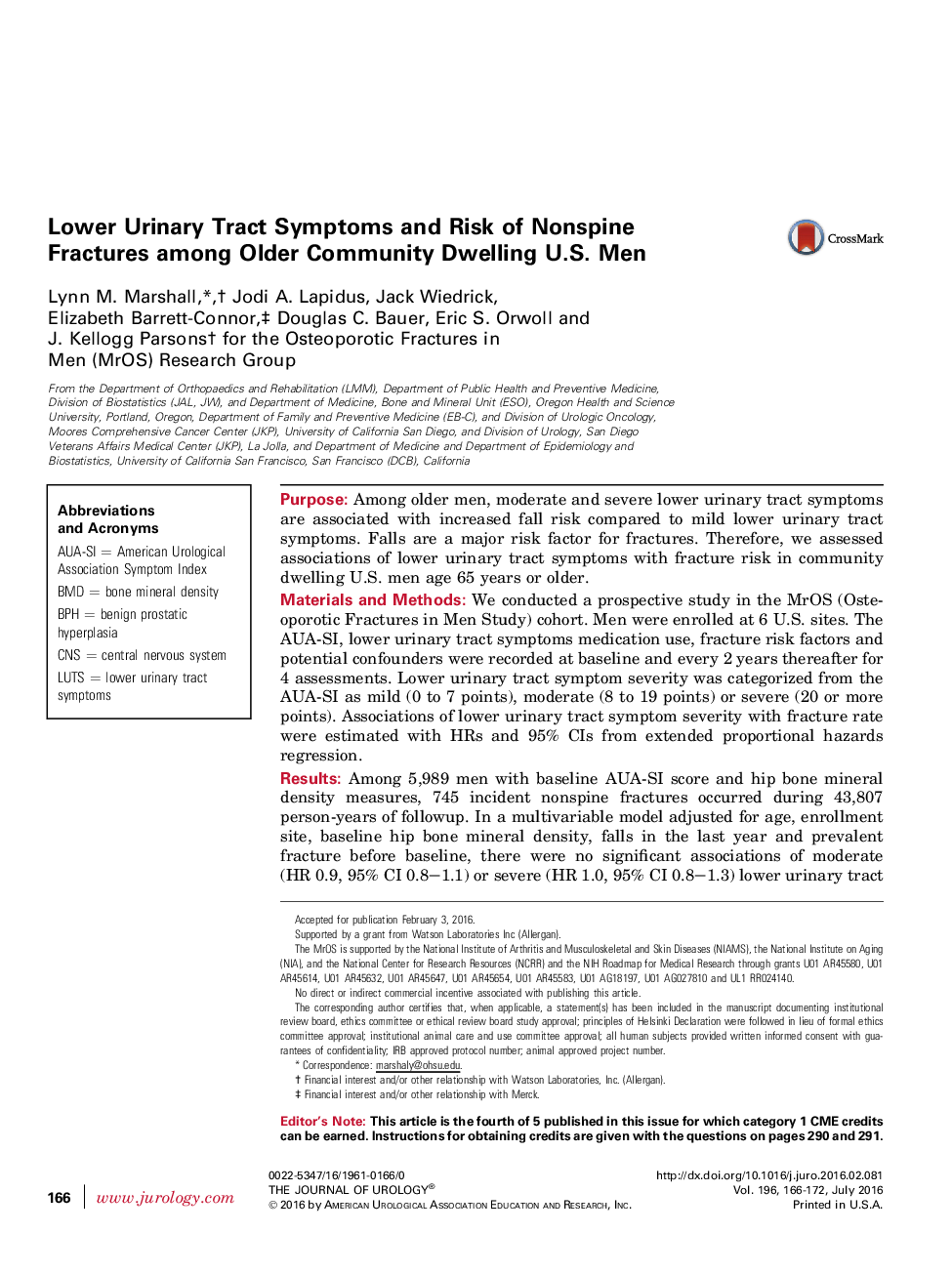| Article ID | Journal | Published Year | Pages | File Type |
|---|---|---|---|---|
| 3858144 | The Journal of Urology | 2016 | 7 Pages |
PurposeAmong older men, moderate and severe lower urinary tract symptoms are associated with increased fall risk compared to mild lower urinary tract symptoms. Falls are a major risk factor for fractures. Therefore, we assessed associations of lower urinary tract symptoms with fracture risk in community dwelling U.S. men age 65 years or older.Materials and MethodsWe conducted a prospective study in the MrOS (Osteoporotic Fractures in Men Study) cohort. Men were enrolled at 6 U.S. sites. The AUA-SI, lower urinary tract symptoms medication use, fracture risk factors and potential confounders were recorded at baseline and every 2 years thereafter for 4 assessments. Lower urinary tract symptom severity was categorized from the AUA-SI as mild (0 to 7 points), moderate (8 to 19 points) or severe (20 or more points). Associations of lower urinary tract symptom severity with fracture rate were estimated with HRs and 95% CIs from extended proportional hazards regression.ResultsAmong 5,989 men with baseline AUA-SI score and hip bone mineral density measures, 745 incident nonspine fractures occurred during 43,807 person-years of followup. In a multivariable model adjusted for age, enrollment site, baseline hip bone mineral density, falls in the last year and prevalent fracture before baseline, there were no significant associations of moderate (HR 0.9, 95% CI 0.8–1.1) or severe (HR 1.0, 95% CI 0.8–1.3) lower urinary tract symptoms with fracture risk. None of the individual lower urinary tract symptoms assessed on the AUA-SI, including nocturia and urgency, was associated with increased fracture risk.ConclusionsIn this cohort of older U.S. men, lower urinary tract symptoms were not independently associated with fracture risk.
